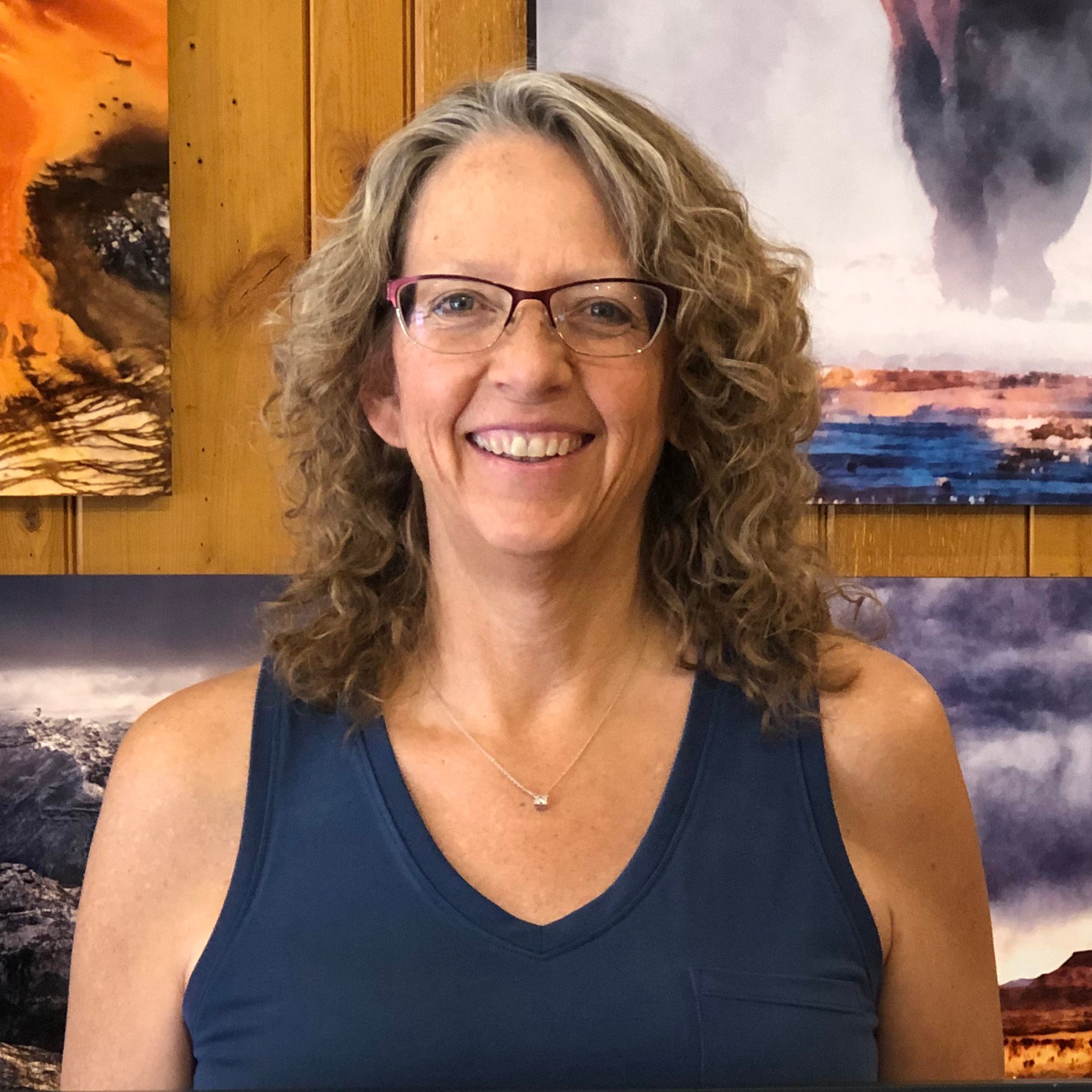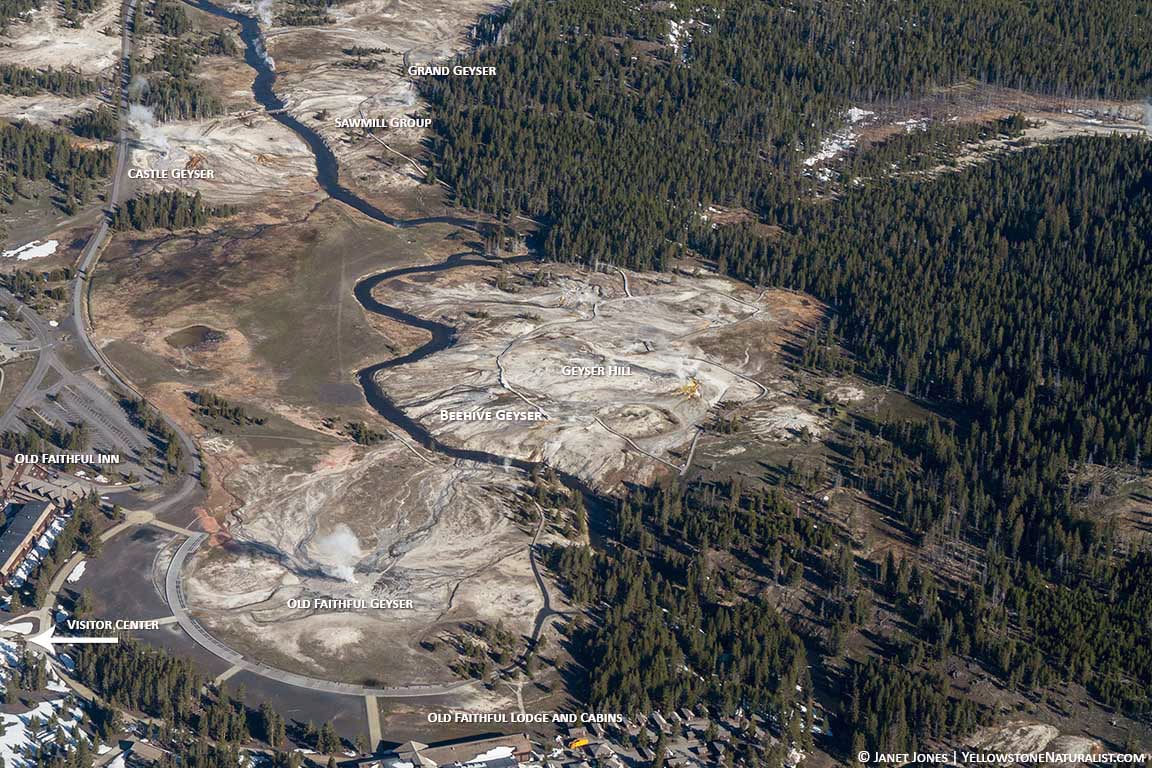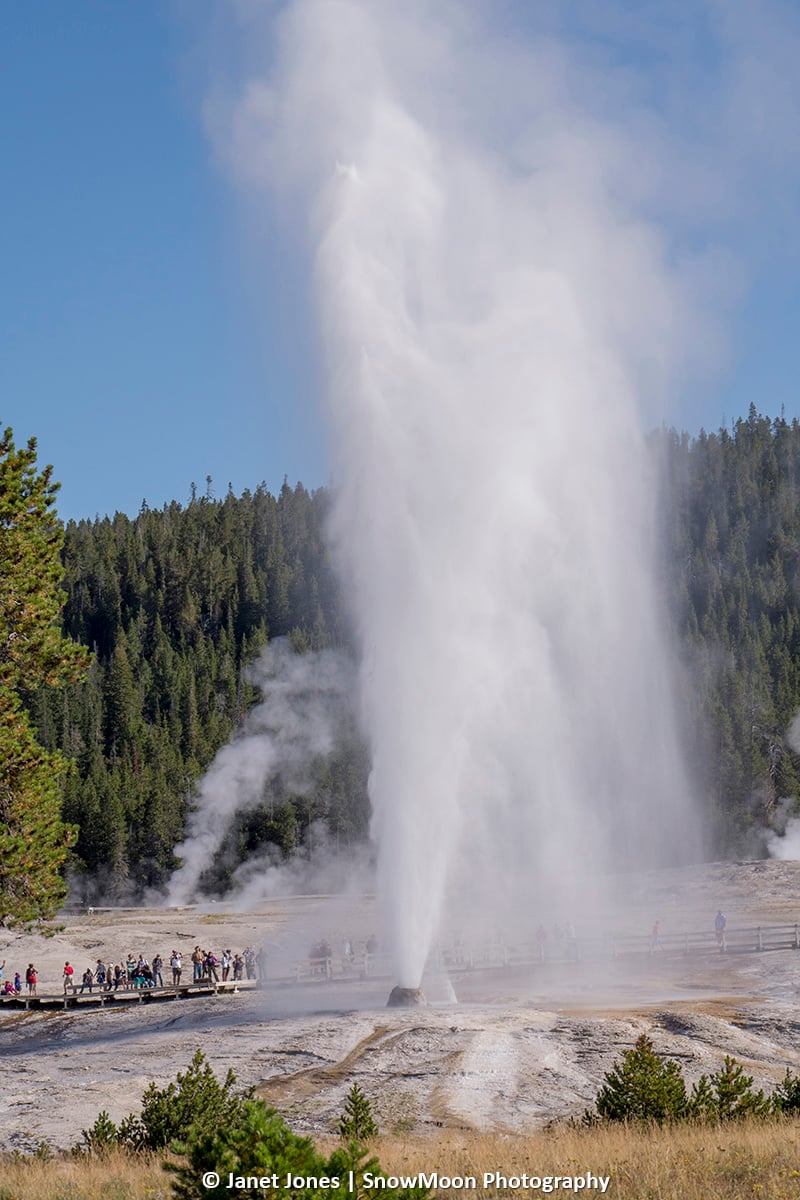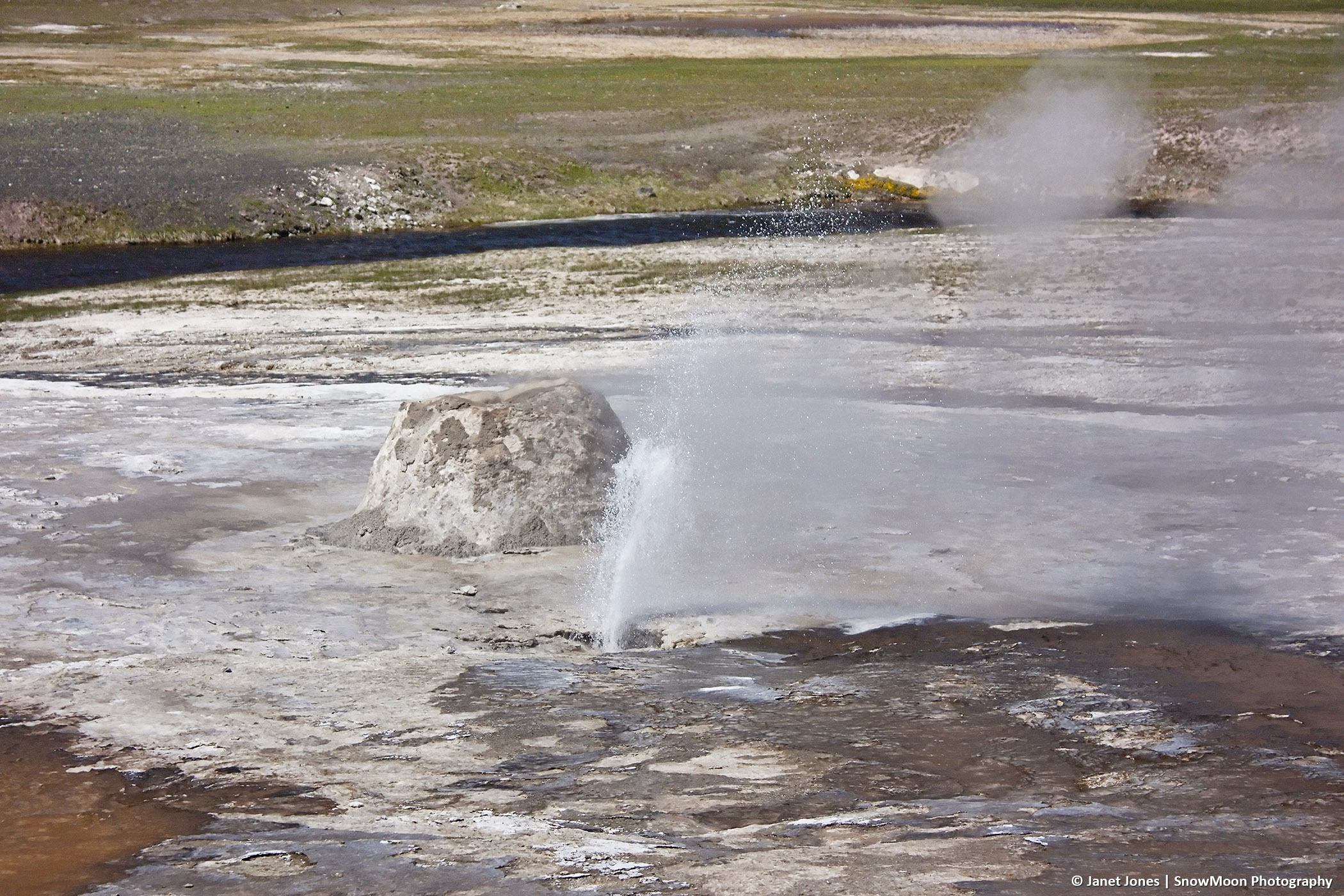Get to Know Beehive Geyser
It’s time to get to know another geyser. You’ll learn about Beehive Geyser, a geyser that has an indicator that announces an eruption will happen. Beehive erupts about every 12-15 hours, so catching this is always a delight.
Where It’s Located
Beehive Geyser is located along the lower boardwalk path on Geyser Hill, not far from Old Faithful. From a distance, the cone looks like a large chunk of rock on the sinter of Geyser Hill.
About Beehive Geyser
Beehive Geyser is taller than Old Faithful, and eruptions last about a minute longer than Old Faithful. While Old Faithful is beautiful, Beehive Geyser is arguably one of the prettiest geysers with its graceful, tall, slender jet of water that reaches up to 200 feet (60 meters) if the wind is calm. When the wind is blowing, the top part of the eruption might be blown away into a fine spray that can reach farther than one might think.
Since the boardwalk is close, there’s the potential of getting drenched to the skin in the spray. While the water that erupts from the cone is hot, the drops in the spray quickly cool to quite a cold shower. On a hot summer day, that might be nice. Noticing the wind direction is a good thing to do when watching an eruption from the boardwalk. Some geyser gazers (geyser enthusiasts) bring ponchos and umbrellas to stand in the spray.
Also, know that the water has silica in it, and if allowed to dry on surfaces (camera lenses, glasses, etc.), it can leave a mineral deposit that’s difficult to clean off. Wipe them off quickly or keep them stowed away.
Beehive Geyser has a helpful Indicator!
Beehive is also a favorite because it has an indicator for eruptions. Beehive’s Indicator Geyser (affectionately known as “Indy”) erupts 6-10 feet high a few feet from Beehive’s cone. These eruptions start when water rises in the system and come anywhere from a few moments before an eruption to up to a half an hour prior. Often, though, it gives about a 10-15 minute warning. Also, know that there are times when the Indicator erupts about halfway through the time between eruptions. These won’t lead to an eruption, so it’s good to know when the last eruption was.
You can find out when it last erupted on GeyserTimes or by asking at the Old Faithful Visitor Center. However, you won’t find Beehive Geyser as one of the park service’s predicted geysers because it is too inconsistent. Checking GeyserTimes lets you know when the last eruption was and checking past eruptions, will let you know about how long between them. Then you can determine whether you might catch it if you’re in the area for a few hours.
Historic Behavior
While currently fairly regular, Beehive Geyser has not always been a regular performer. In the early 1900s, a guidebook stated that Beehive erupted every 12-40 days. However, in the very early days of Yellowstone, it was reported to erupt, similar to what we currently see. In 2007, Beehive had a short dormancy that lasted long enough for microbes to grow near the cone thanks to continual water from the small bubblers surrounding the main cone
Eruptions
Beehive often splashes up a foot or two. If the Indicator is going, an eruption should happen soon. The start of the eruption usually comes from a larger splash that may disappear and quickly return and build into the full eruption. It takes a bit for the eruption to reach full height.
Once the water has been expelled, the steam phase begins, which can be quite loud. In fact, eruptions in the middle of the night during the summer can wake visitors. The full eruption, including the steam phase, takes about five minutes.
In Conclusion
Considering it usually erupts only once during daylight hours, Beehive may be harder to catch if you only stay in the Upper Geyser Basin for a short time. If you stay in the lodging at Old Faithful, you have a very good chance of catching this darling geyser in person. It’s definitely worth it.

Article by Janet Jones
Owner of Cody Journal and SnowMoon Photography
Janet has a rich history in Cody with her grandparents moving here in the late 1930s. Her grandfather started Wyoming Well Service. Janet is a writer, photographer, graphic designer and webmaster. Cody Journal and Cody Calendar blends her skills and talents with her love of the area.



